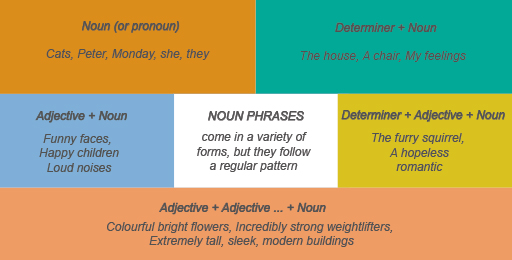1.3 The order of words (in English)
Analysing the word order in The quick brown fox jumps over the lazy dog, we can make the following observations:
- Determiners (DET) go before nouns to make noun phrases – those shoes; the cat; that house
- Adjectives (ADJ) go before nouns (but after determiners) and are included in the noun phrase – those red shoes; the black cat; that enormous house
Based on what you’ve learned in earlier weeks, we might also add:
- Pronouns (PRO) can stand in for a whole noun phrase (see Figure 3 above)
- Prepositions (PREP) go before noun phrases, to form prepositional phrases – with high heels; in the garden; on a leafy avenue
- Auxiliaries (do/be/have and modal auxiliaries like must, can, etc.) go before other verbs – I do like; he could swim; we might buy one; you should avoid them
Don’t worry about learning all these rules right away. This list is just here to remind you of what you’ve already come across in this course so far.
Of course, other languages can use different word orders. In French and Spanish, for instance, adjectives often come after nouns, though notice that in French that’s not always the case*. In German, adjectives come before the noun, as they do in English (and as you can see, nouns start with a capital letter – a useful clue for learners!).
| English | French | Spanish | German |
| red shoes | souliers rouges | zapatos rojos | rote Schuhe |
| the black cat | le chat noir | el gato negro | die schwarze Katze |
| a large house | une grande maison* | una casa grande | ein großes Haus |
| the British woman | la femme britannique | la mujer británica | die britische Frau |
| a strange man | un homme étrange | un hombre raro | ein fremder Mann |

